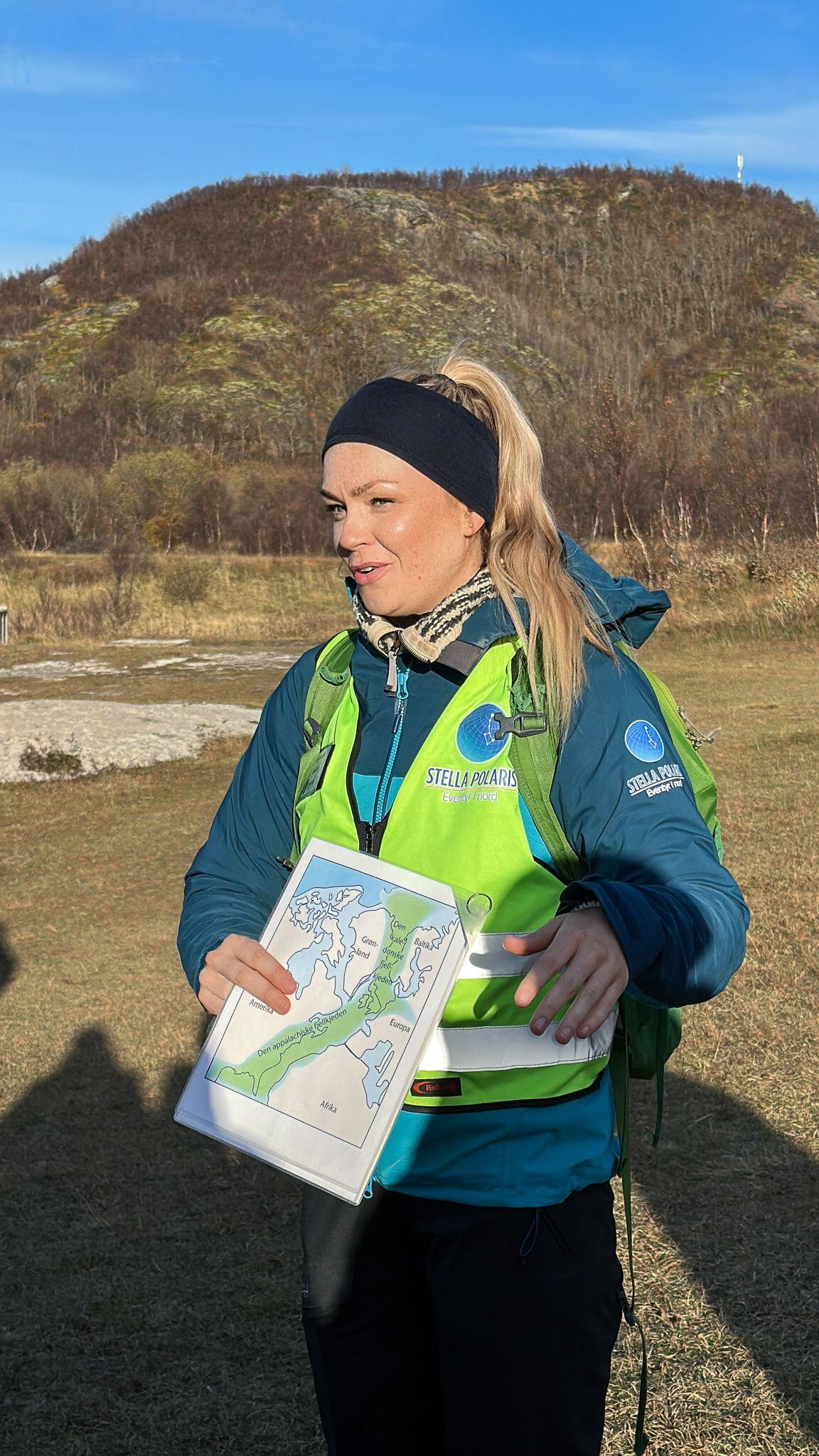Viking Trails and Nordic Tales
How did the Norwegian landscape form? Where did the first Norwegians come from, and were the Vikings truly raiders or traders? These questions – and many more – were explored during a guided hike along the coast and into a forest grove in Lofoten.
The Love for the Outdoors
"We Norwegians love spending time outdoors. We enjoy hiking, picking berries, skiing, and just being outside," shared Katrine Herrera-Jonassen, a guide from Stella Polaris, associated with Havila Voyages. Her broad smile welcomed the diverse group, including people from Switzerland, the US, England, and Norway, who had traveled by bus from the Havila Voyages’ coastal ship, Havila Pollux, docked at a nearby port terminal.
Defining Norwegian Identity
Katrine, with a gleam of humor, remarked, "When Norway gained independence in 1905, we sought to define our distinct Norwegian qualities. This led to honoring two famous Norwegian explorers, Fritjof Nansen and Roald Amundsen, as national heroes, embodying ideals for our young nation." The stunning northern Norwegian coastal landscape around us highlighted why Norwegians value nature so deeply. The Arctic fjords, mountains, forests, and famous white beaches are truly magnificent.
Allemannsretten: The Right to Roam
"We have a unique law in Norway, the 'Allemannsretten' (The right for all), which allows everyone free access to nature. This means you can't fence off your land unless it's a private garden. You're also allowed to camp anywhere, provided you're at least 150 meters away from the nearest dwelling and stay no more than two days," Katrine explained.
As we strolled along the well-maintained coastal path, we soon saw one of those famous beaches – as picturesque as any tropical paradise.
It was an ideal time to use our cameras.
The mountains around us appeared to rise directly from the fjord. Katrine explained that this unique landscape was formed about 430 million years ago during the collision of the North American and Eurasian tectonic plates. This event, lasting around 30 million years, created a 6,000-kilometer-long mountain range, with some peaks reaching up to 8,000 meters high. This range remains the longest in history, stretching from the north of Norway to south of Florida.
Tracing Origins Back to Doggerland
As we assembled at the beach's edge, Katrine explained, "The first Norwegians came from Doggerland when the second to last ice age ended about 10,000 years ago. The temperature rose by nine degrees, rapidly melting the ice and encouraging people to migrate northward for hunting. They probably came from Doggerland near Britain, named after the Dogger Bank fishing area. They might have traveled north by boat over 'The Norwegian Trench', or perhaps they crossed it on ice."

For a long time, it was believed that all Norwegians descended from the southeast, as the Sami people did. However, discoveries in the 1970s and 1980s challenged this view. "A complete skull with teeth found in an oil exploration area showed that these remains, lying 'on the ocean floor' for thousands of years, had Doggerland DNA," Katrine said.
We continued our walk along the coastal path leading us away from the beach and into a small forest grove.
We paused at what appeared to be a nondescript site. However, it was a Viking burial ground. A stone, possibly a grave marker, was barely visible, emerging from the earth beside the path. In this area, forty Viking graves have been uncovered. "Vikings were usually buried with their valuables, but since no such items were found here, these graves were likely robbed," Katrine explained.
The Viking Legacy
This revelation about the Vikings sparked our curiosity. We had all heard stories of the fierce Norwegian Vikings who sailed around the world in large 'dragon ships', raiding everything in sight. "Many think of the Vikings as barbaric, but they saw themselves as seafarers and traders. They also cared about cleanliness, bathing weekly. The Norwegian word 'lørdag' (Saturday) comes from 'laugardagr', meaning 'washing day'," Katrine continued. "Moreover, they dressed in stylish clothes made from wool or linen, colored with natural plant dyes. They often displayed their wealth by wearing valuables, such as animal bones, on their clothing.”
Vikings: Traders or Raiders?
An American in our group asked a question on many of our minds: “Were the Vikings primarily thieves or traders?”. "They were likely a mix of both, though they are more famous for their plundering," Katrine replied, smiling. Interestingly, it was the Vikings' trading with European businesses that led to the Christianization of Norway. "The Norwegians had their own religion, Norse mythology, but upon discovering Europeans preferred trading with Christians, the Vikings began to identify as Christians, bringing these beliefs back to Norway," Katrine explained.
The Role of Stockfish
A significant Viking trade item was stockfish (dried cod), an innovation that provided essential protein during travels. The preparation involved gutting and decapitating the fish, then hanging it out to dry, allowing it to be stored for years. When ready to eat, the fish was rehydrated to its original size. Dried fish continues to be an important export for Norway, along with klipfish, prepared in a similar way but salted and dried on rocks.
Exiting the forest, we came across another stunning view and an equally beautiful beach.
Photographers in our group briefly fell behind, capturing the view. Shortly after, while walking on the narrow coastal path, we met a horse and a rider, and stepped aside to allow them to pass.

Can you spot the horse atop the hill? It's the very same one that passed us on the path just moments later.

